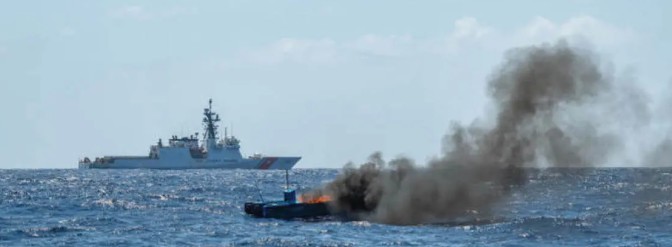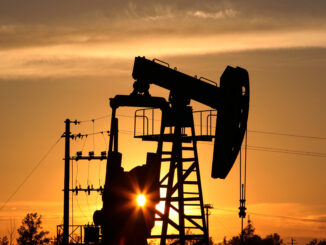
Introduction: A Nation in Turmoil Amid Escalating US Involvement
As of October 2025, Venezuela remains gripped by political instability, economic collapse, and international tensions. President Nicolás Maduro clings to power following a disputed July 2024 presidential election, where opposition leader Edmundo González claimed victory based on tally sheets, but Maduro’s regime declared him the winner amid allegations of fraud.
The country faces hyperinflation, widespread shortages, and a humanitarian crisis that has driven millions to flee, exacerbating migration pressures on neighboring countries and the United States. Recent natural disasters, including landslides triggered by heavy rains, have compounded the suffering, affecting regions like Carabobo and Aragua.
The Trump administration has ramped up pressure on Maduro’s regime, authorizing covert CIA operations inside Venezuela and conducting military strikes on suspected drug-trafficking vessels in the Caribbean.
President Trump confirmed these actions publicly, stating they target “narcoterrorists” and aim to stem the flow of drugs and migrants into the US.
This escalation follows failed Venezuelan overtures for a gradual power transition, which were rejected by the US.
Meanwhile, the Nobel Peace Prize awarded to Venezuelan opposition figure María Corina Machado has spotlighted the ongoing struggle, though experts warn it may not dislodge Maduro without broader international action.
At the heart of this crisis is Venezuela’s vast oil reserves—the world’s largest—yet the nation struggles to capitalize on them due to sanctions, mismanagement, and declining production. Oil exports hit a nine-month high of over 900,000 barrels per day (bpd) in September 2025, but this is a fraction of pre-2014 levels when prices exceeded $100 per barrel.
By October 2025, exports surpassed 1 million bpd for the first time since 2020, with 84% heading to China.
This energy dynamic underscores the geopolitical stakes, particularly China’s deep entanglement in Venezuela’s economy.
China’s Long-Term Investments: A Lifeline Turned Liability
Over the past three decades, China has poured tens of billions into Venezuela, making it Beijing’s largest borrower in Latin America and a key node in its global resource strategy. Starting in the 1990s under President Hugo Chávez, ties deepened with oil-for-loan deals that aligned with China’s need for energy security and Venezuela’s quest for development funds, bypassing Western institutions.
From 2000 to 2014, Venezuela received more financing from China than any other country globally, peaking between 2007 and 2016 with over $62.5 billion in loans—nearly half of China’s total lending to the region.
These were predominantly oil-backed, allowing Venezuela to repay through crude shipments rather than cash. By 2018, cumulative loans exceeded $62 billion, representing 53% of China’s lending to Latin America.
Investments spanned energy, infrastructure, and agriculture, including joint ventures like the Sinovensa oil project. However, Venezuela’s economic meltdown—fueled by falling oil prices from $100+ per barrel in 2014 to under $30 in 2016—led to defaults and restructuring.
As of 2019, outstanding debt hovered around $19 billion, much of it still oil-repayable.
China’s engagement has waned in recent years amid Venezuela’s instability, but trade persists: In 2016, bilateral trade reached $7.42 billion, with $4.9 billion from Venezuelan exports (mostly oil).
By 2024, China imported $1.6 billion from Venezuela, while Venezuela exported $254 million to China in 2013 (latest available granular data).
In energy terms, China’s oil purchases have been substantial. Historical exports included deals where Venezuela shipped crude to repay loans, with volumes tied to agreements worth over $50 billion by 2019.
Recently, amid US sanctions relief in 2023-2024, exports to China surged: In June 2025, Venezuela shipped 844,000 bpd of crude and fuel, plus 233,000 tons of byproducts, with China as the top buyer.
By August 2025, China exported $528 million to Venezuela, a 14.4% monthly increase, highlighting ongoing trade despite risks.
These investments have influenced Venezuela’s development unevenly: While funding infrastructure, they’ve also enabled corruption and debt traps, contributing to the current crisis.
Trump’s Public Rhetoric and Actions: Echoes of the Monroe Doctrine
President Trump has been vocal on Venezuela, framing it as a threat to US security due to migration, drugs, and foreign influence. In recent X posts, he celebrated the release of six US hostages from Venezuela in February 2025, crediting his staff and noting Venezuela’s agreement to accept back deported illegal aliens, including Tren de Aragua gang members.
He emphasized strong border numbers and mass deportations. Publicly, Trump has confirmed authorizing CIA covert operations and warned of potential land strikes, citing Venezuelan attacks on US interests and the emptying of prisons into the US.
His administration imposed sanctions during his first term, charging Maduro with narcoterrorism in 2020, and now offers $50 million for information leading to his capture.
Trump labels Venezuelan cartels as terrorist organizations and justifies strikes as counter-narcotics efforts.
This aligns with the Monroe Doctrine, established in 1823 to oppose European colonialism in the Americas and later expanded to counter any foreign meddling.
Trump revived it explicitly: In 2018, he declared it “alive and well,” rejecting foreign interference in the hemisphere.
Critics dub it the “Donroe Doctrine,” blending Monroe’s principles with Trump’s aggressive style.
Trump’s actions—sanctions, CIA ops, and strikes—protect US interests by curbing Chinese and Russian influence, reducing drug flows, and stemming migration. They echo historical US interventions under the Doctrine, from Cuba to Panama, but risk escalation or blowback.
The Endgame: Regime Change and Hemispheric Dominance
The Trump administration’s real endgame appears to be ousting Maduro to have a new election and, hopefully, a pro-US government, securing access to Venezuela’s oil, and diminishing China’s foothold.
By invoking the Monroe Doctrine, Trump aims to reassert US hegemony in the Western Hemisphere, countering Beijing’s “debt diplomacy” and Russia’s support for Maduro. Success could stabilize energy markets, boost US oil imports, and reduce migration pressures, but failure risks prolonged conflict or strengthened anti-US alliances.
As tensions mount, the energy sector watches closely: Venezuela’s oil could reshape global supplies if production rebounds under new leadership. For now, the standoff highlights the intersection of energy, geopolitics, and ideology in America’s backyard.
Got Questions on investing in oil and gas? Or do you have a Tax Burden in 2025?
Crude Oil, LNG, Jet Fuel price quote
ENB Top News
ENB
Energy Dashboard
ENB Podcast
ENB Substack






